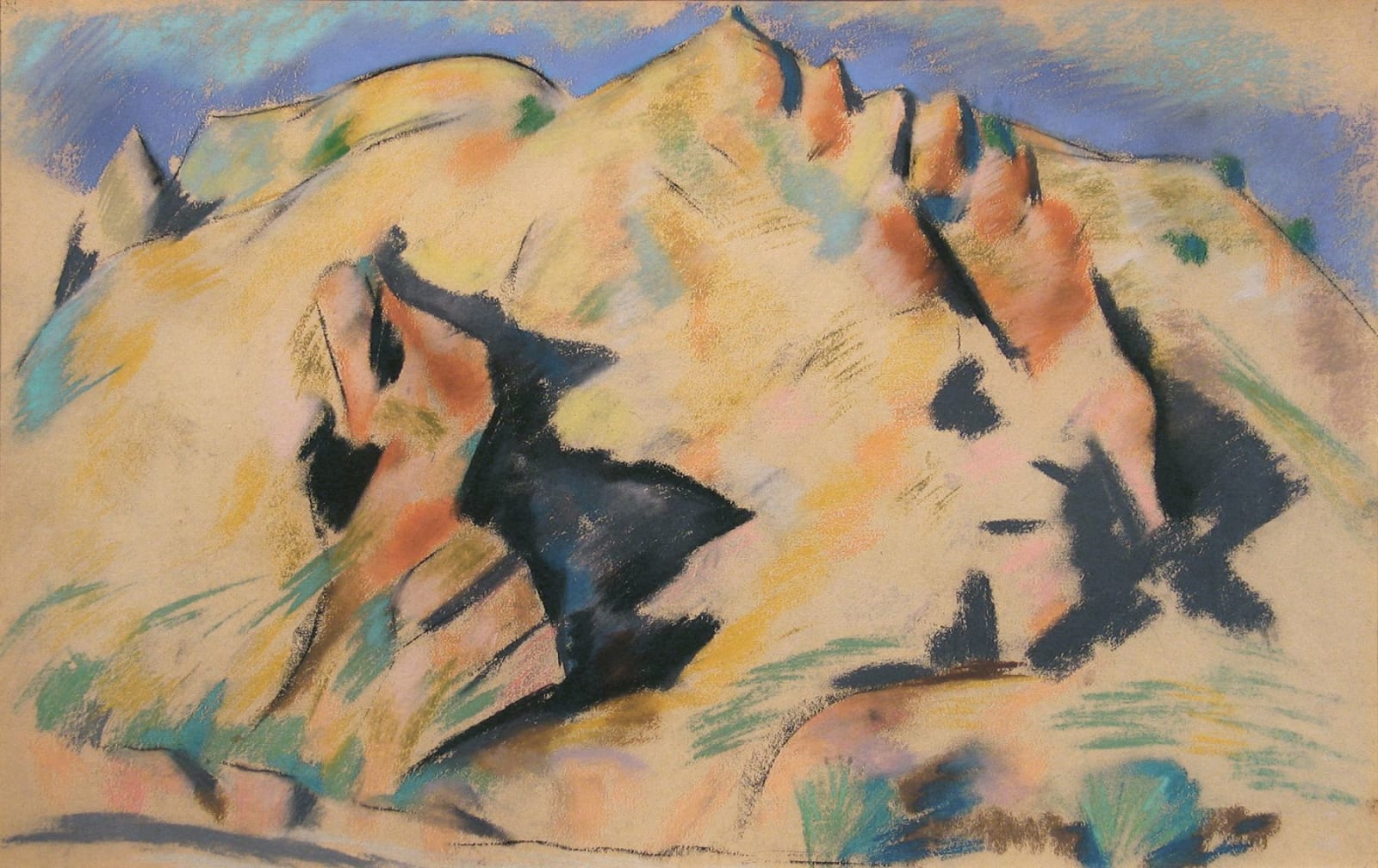Marsden Hartley American, 1877-1943
43.2 x 71.1 cm
This work is included in the Marsden Hartley Legacy Project: Complete Paintings and Works on Paper with Bates College Museum of Art, Lewiston, Maine.
New Mexico Landscape belongs to a group of pastels Marsden Harley created while visiting the Santa Fe and Taos region in 1918. Hartley was riveted by the Southwest landscape, as seen most clearly in his pastels of the region. Hartley mainly worked in pastel while in New Mexico as the medium offered the perfect combination of a rich palette of high-keyed colors and the easy portability that would allow him to venture into the desert. While working outdoors, Hartley used intense colors to evoke the sparkling light around him. In letters to his dealer Alfred Stieglitz, the artist noted that the colors in New Mexico differed from the reds and yellows he had anticipated and instead he utilized blues, greens, pinks, and purples. New Mexico Landscape abounds with these vibrant hues.
Provenance
The artist;[M.R. Schweitzer Gallery, New York]; to
Private collection, New York;
By descent in the family, until the present

